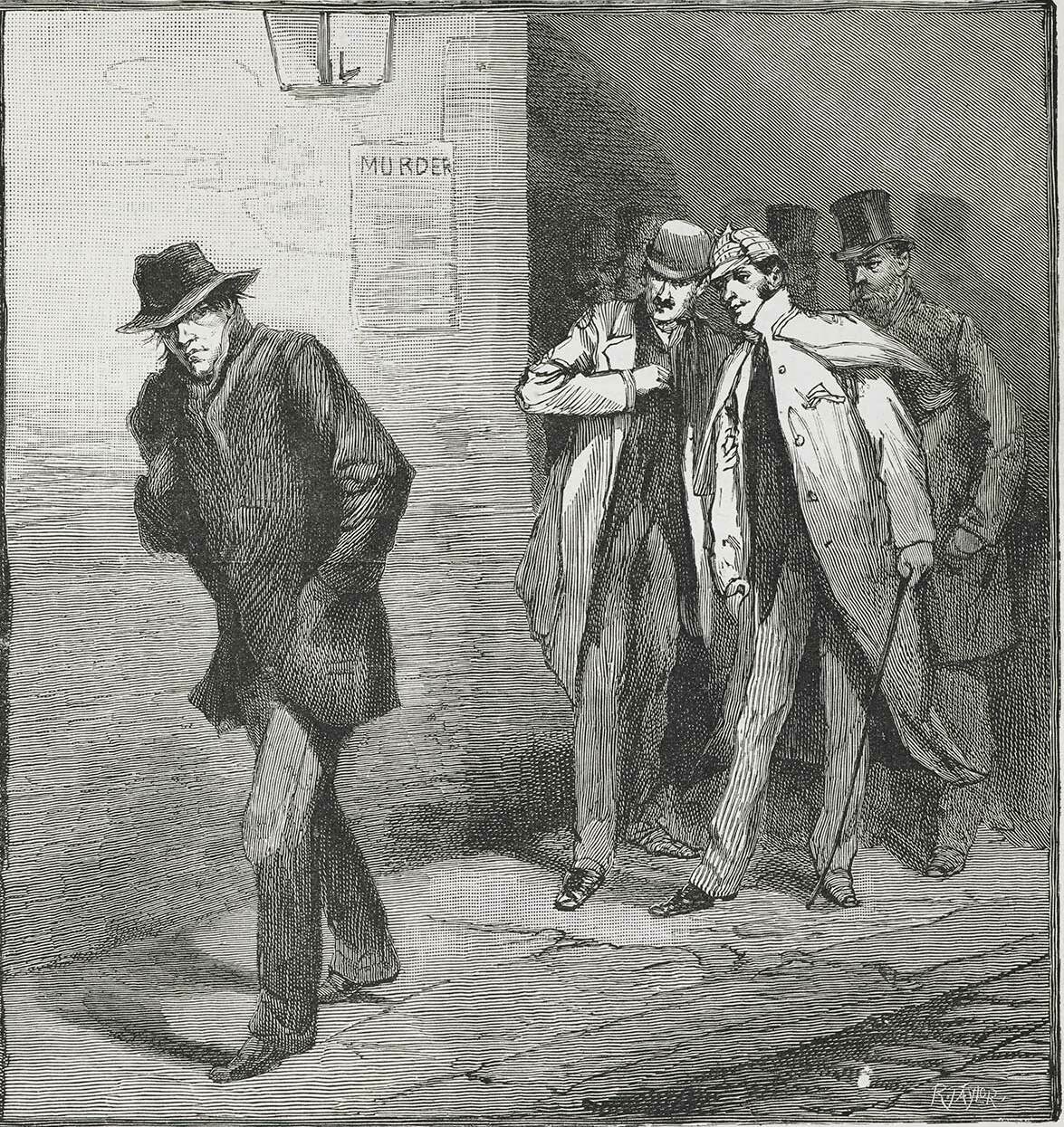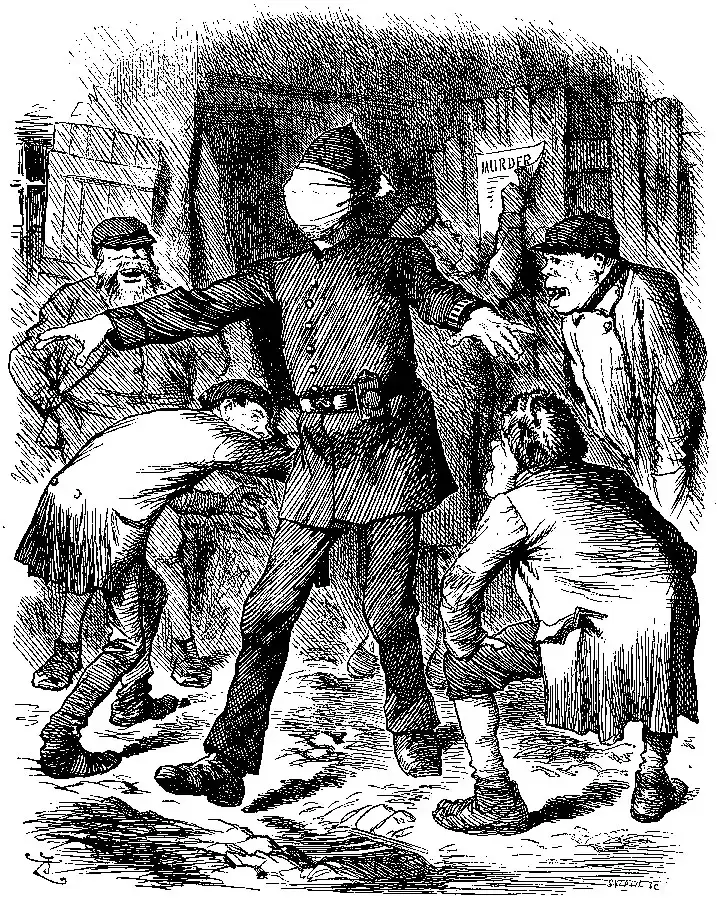
Credit: Adobe Stock
Jack The Ripper Finally Unmasked After DNA Breakthrough
The identity of Jack the Ripper, one of the most famous serial killers of all time, has finally been revealed.
Few criminal cases have captivated the public’s imagination as deeply as that of Jack the Ripper.
Operating in the impoverished Whitechapel district of London in the late 19th century, the serial killer committed a series of brutal murders that shocked Victorian society and sparked widespread panic.
Despite countless investigations, books, and theories on the subject, the true identity of Jack the Ripper has been one of the most famous unsolved mysteries in criminal history.
Until now.
Forensic scientists claim to have finally identified Jack the Ripper and even shared a photo of his face.

During the killer’s reign of terror, Whitechapel was an area of extreme poverty, overcrowding, and crime.
Many of its residents were unemployed or worked in grim, low-paying jobs. Life was tough and alcoholism and violence were rampant.
Prostitution, too, was widespread, with hundreds of women turning to the profession to survive.
The dark, narrow streets, fog-covered alleys, and squalid living conditions created an environment where crimes could easily go unnoticed.
Between August and November of 1888, Jack the Ripper is believed to have killed at least five women, known collectively as the ‘Canonical Five.’
These were Mary Ann Nichols, Annie Chapman, Elizabeth Stride, Catherine Eddowes, and Mary Jane Kelly, although there is some uncertainty as to how many victims the Ripper truly had.

What set the Ripper’s killings apart was the sheer brutality of the attacks.
The victims’ throats were cut, and their abdomens were slashed open, with some of the internal organs removed.
The killer’s precision led some investigators to speculate that he might have had medical or anatomical knowledge, though this remains a point of debate.
Each murder took place at night, often in dark alleyways or secluded spots, and despite the killer’s gruesome methods, he was never caught in the act.
The police, despite their efforts, were always one step behind the Ripper.
During the investigation, police and newspapers received several letters, supposedly from the killer himself.
The most infamous of these is the ‘Dear Boss’ letter, in which the writer first referred to himself as ‘Jack the Ripper.’
While it is unclear whether the letter was genuinely from the killer or a hoax, the name ‘Jack the Ripper’ stuck and became part of criminal folklore.
Another letter, known as the ‘From Hell’ letter, was accompanied by half of a human kidney, which the writer claimed had been taken from one of the victims, per British Heritage.

The police response to the Ripper murders was marred by confusion and inefficiency.
The Metropolitan Police and the City of London Police, responsible for different parts of Whitechapel, failed to cooperate effectively.
With no forensic science to rely on and only rudimentary investigative techniques, authorities struggled to gather evidence or witnesses.
Several suspects were identified, but none were definitively linked to the murders.
Other theories suggested that the killer was a butcher, a surgeon, or even a member of the British royal family, but none of these claims could be proven.
The press and the public were relentless in their criticism of the police’s failure to catch the killer, and the intense media coverage and the growing sense of fear in London gave rise to a wave of Rippermania.
Newspapers sold rapidly, with sensationalized headlines and illustrations, further feeding the atmosphere of terror.
More than a century later, Jack the Ripper’s identity remains a subject of fascination – and the latest break in the case may be the most exciting update yet.

Forensic scientists believe they have finally identified Jack the Ripper.
The findings come from an analysis of a stained silk shawl, which investigators claim was found near the body of Catherine Eddowes, the Ripper’s fourth victim, in 1888, per Science.org.
The shawl reportedly contains traces of blood and s***n, with the latter thought to be from the killer.
Eddowes was one of five women killed during a three-month murder spree in London.
This isn’t the first time that the man now thought to be Jack the Ripper has been linked to the crimes, but it is the first time supporting DNA evidence has been published in a peer-reviewed journal.
Initial DNA tests were conducted years ago by Jari Louhelainen, a biochemist at Liverpool John Moores University. Louhelainen delayed publishing the results at the time, waiting for public interest to subside.
Russell Edwards, who purchased the shawl in 2007 and gave it to Louhelainen for analysis, used the unpublished results to name this man as the killer in his 2014 book, ‘Naming Jack the Ripper.’
At that time, geneticists criticized the lack of technical details in the analysis.

The genetic tests suggest that Aaron Kosminski, a 23-year-old Polish barber and a prime suspect at the time, could be the culprit.
The newly published paper provides some of those details. Louhelainen and David Miller, a reproduction and sperm expert from the University of Leeds, describe extracting and amplifying DNA from the shawl.
They compared fragments of mitochondrial DNA, inherited only from one’s mother, found on the shawl to samples from descendants of both Eddowes and Kosminski.
Mitochondrial DNA (mtDNA) is the DNA found in the mitochondria of a cell, which are organelles that generate energy for the cell.
According to the researchers, the DNA matched that of a living Kosminski relative, as reported in the Journal of Forensic Sciences.
Their analysis also suggests that the killer had brown hair and eyes, matching an eyewitness description.
While acknowledging that these traits are common, the authors note that brown eyes are less prevalent than blue eyes in modern-day England.

Skeptics remain unconvinced by the results.
The paper does not disclose specific genetic variants used in the comparison.
The authors, however, argue that they cannot release the full sequences due to the U.K.’s Data Protection Act, which protects the privacy of living individuals.
Experts like Walther Parson of Innsbruck Medical University, though, argue that mitochondrial DNA poses no privacy risk and should have been included in the publication.
Without it, Parson notes, readers cannot properly evaluate the findings.
Hansi Weissensteiner, another mitochondrial DNA expert, also doubts the conclusions, stating that mitochondrial DNA can only reliably show that two samples are not related.
Mitochondrial DNA (mtDNA) can only be passed down through a maternal line, so it’s not a unique identifier and can’t be used to implicate someone as the killer.
While mtDNA can be used to eliminate suspects, it can’t prove that someone is guilty.
He suggests that, while the shawl’s DNA could belong to Kosminski, it could just as easily belong to someone else living in London at the time.
Furthermore, other critics have pointed out that there is no proof the shawl was actually present at the crime scene, and that it could have been contaminated over the years, including Mick Reed of the University of New England in The Conversation.

Related Article: Kate McCann ‘Haunted’ By Madeleine’s Question To Her The Morning She Vanished Without A Trace
Related Article: Missing Worker Found Trapped Behind Store Shelves After 10-Year Search